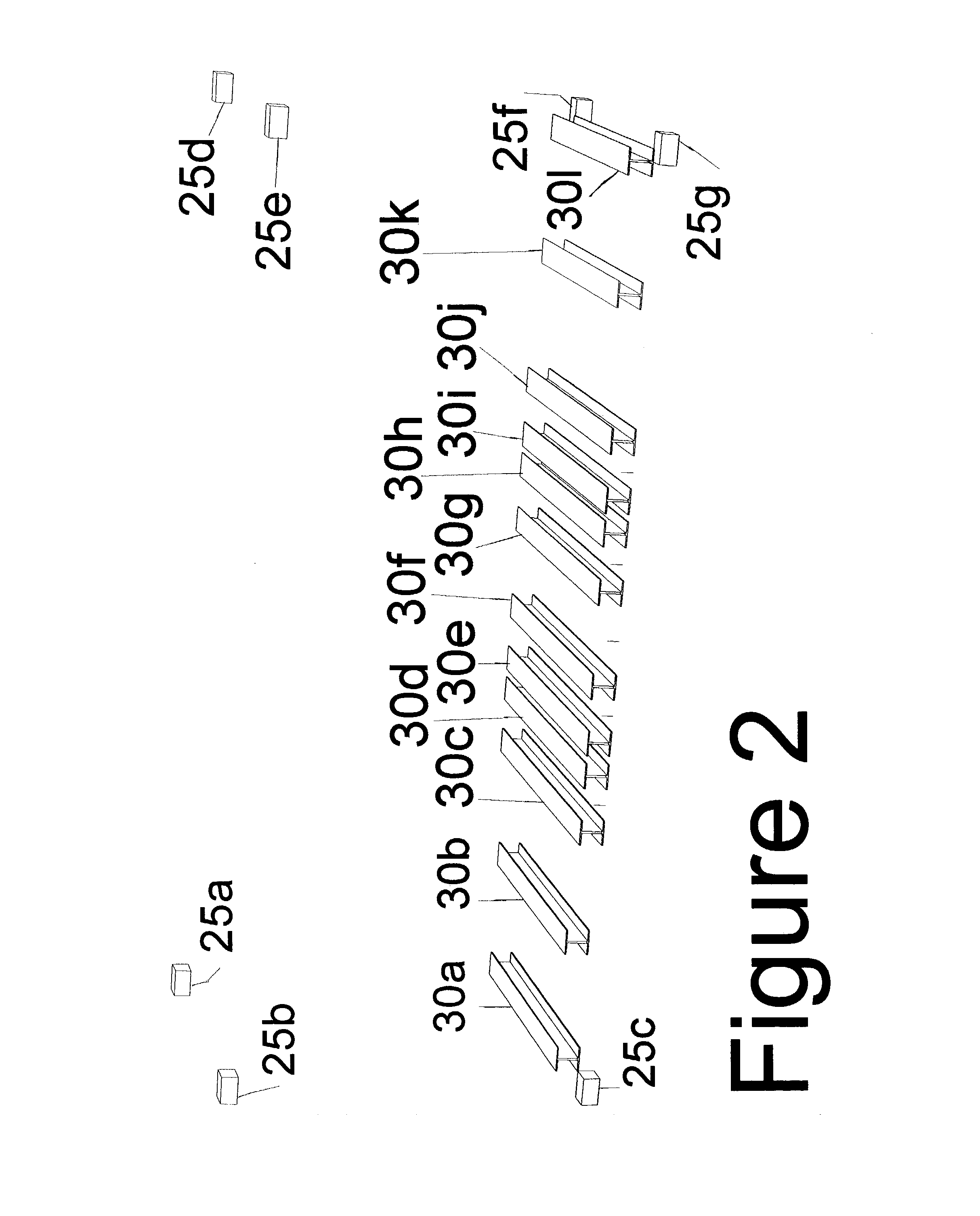Intermodal bulk dry particulate cargo container and method
a technology of intermodal bulk dry and cargo containers, applied in the field of shipping containers, can solve the problems of reducing the cargo capacity of the container, affecting the speed of handling, and disadvantages of such designs
- Summary
- Abstract
- Description
- Claims
- Application Information
AI Technical Summary
Benefits of technology
Problems solved by technology
Method used
Image
Examples
second embodiment
[0079]FIG. 9 is a perspective view of the cradle of the invention according to the invention, that is, a cradle without a specific container placed therein. In this embodiment also, cradle 10 comprises cradle frame 65 and hinge plate 70.
[0080]FIG. 10 is a perspective view of the cradle of the invention placed on an erector according to a third embodiment of the invention. Cradle 10 is placed on erector 12 and secured thereto by means of container locks such as exemplary container lock 90a, with its weight resting via hinge plate 70 on exemplary hinge block 85a and leveling rest 75 or leveling rest 80 depending upon the orientation of cradle 10. In the horizontal orientation pictured in FIG. 10, the weight of cradle 10 rests on hinge block 85a and leveling rest 75. FIG. 11 is a perspective view of erector 12 of the invention according to the third embodiment, without cradle 10 thereon. Hinge block 85b, container lock 90b, and hinge shaft 95 are visible. Erector 12 is dimensioned and ...
fourth embodiment
[0082]FIG. 12 is a perspective view of the erector of the invention having load cells under each corner. Erector 12 is supported by load cells 100a, 100b, 100c and 100d, which may be structural members only or may be used to measure the weight or mass of the contents of erector 12. Use of multiple component scales to measure weight is well known in this art field. A plurality of load cells such as load cell 100a, etc, wherein the weight of the erector 12, cradle 10, container 5 and cargo rest upon the load cells, and wherein the load cells further comprise at least one scale to measure the weight resting upon the load cells, or to measure an incremental weight change of the container indicating an incremental discharge from the container and combinations thereof, which greatly eases discharge / drain of a measured quantity of cargo.
[0083]While the invention has been depicted as a device, it will be appreciated that it may more broadly be considered to be either a method or a device. ...
PUM
 Login to View More
Login to View More Abstract
Description
Claims
Application Information
 Login to View More
Login to View More - R&D
- Intellectual Property
- Life Sciences
- Materials
- Tech Scout
- Unparalleled Data Quality
- Higher Quality Content
- 60% Fewer Hallucinations
Browse by: Latest US Patents, China's latest patents, Technical Efficacy Thesaurus, Application Domain, Technology Topic, Popular Technical Reports.
© 2025 PatSnap. All rights reserved.Legal|Privacy policy|Modern Slavery Act Transparency Statement|Sitemap|About US| Contact US: help@patsnap.com



